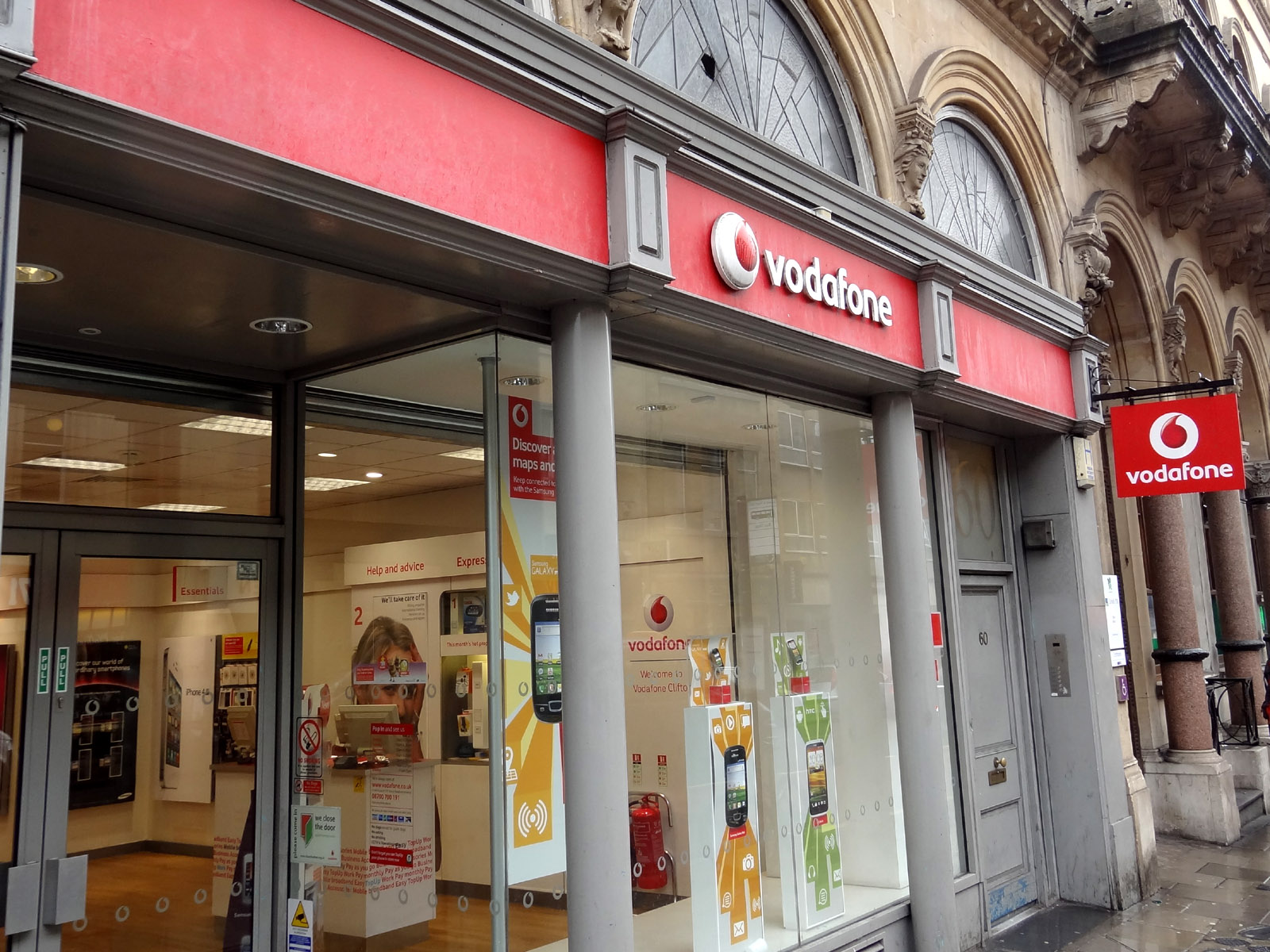 The approach towards mergers remains the most controversial area of competition policy. Some argue that policy makers in both the UK and EU have been too easily persuaded by the arguments put forward by firms and so have allowed too many mergers to proceed. Others claim that the opposite is true and that merger policy has prohibited mergers that should have been allowed to proceed. This, then, has a negative impact on investment, innovation, productivity and growth.
The approach towards mergers remains the most controversial area of competition policy. Some argue that policy makers in both the UK and EU have been too easily persuaded by the arguments put forward by firms and so have allowed too many mergers to proceed. Others claim that the opposite is true and that merger policy has prohibited mergers that should have been allowed to proceed. This, then, has a negative impact on investment, innovation, productivity and growth.
In recent years there has been more specific criticism of merger policy in the UK. The government has indicated that it wants the Competition and Markets Authority (CMA) to be less interventionist and take a more pro-growth approach.
 In February 2025, in response to this criticism, the CMA launched its new ‘4 Ps’ approach to merger policy: Pace, Predictability, Proportionality and Process. Various changes to the investigation process have been proposed in the past 12 months using this framework.
In February 2025, in response to this criticism, the CMA launched its new ‘4 Ps’ approach to merger policy: Pace, Predictability, Proportionality and Process. Various changes to the investigation process have been proposed in the past 12 months using this framework.
Pace. The time taken by the CMA to initially assess a merger before deciding whether a Phase 1 investigation is necessary (i.e. the pre-notification procedure) was reduced from 65 to 40 working days. Also, the target to complete straightforward Phase 1 investigations was reduced from 35 to 25 days.
Predictability. The proposed merger guidelines, published in October 2025, provide more detail on (a) what criteria will be used to measure market shares when applying the ‘share of supply test’ (this is where the combined UK market share of two merging businesses is at least 25%, provided one business has a UK turnover of at least £10 million), and (b) the factors that are likely to lead to the competition authorities concluding that one business has gained ‘material influence over another’. Businesses had complained that there was too much uncertainty about the way the share of supply test and material influence were applied. The CMA is also considering greater alignment with other international regulators over decision making rather than its previous policy of acting independently. All these measures should increase the predictability of the investigation process.
 Proportionality. Proportionality refers to the objective of addressing any competition issues in merger cases in a way that places the minimum burden on the businesses involved. To improve proportionality, the CMA has indicated that in future cases it will be more willing to use behavioural remedies – requiring firms to take or desist from certain actions. New draft guidelines identify more situations where the use of behavioural remedies may be appropriate. However, they also show that the CMA still views structural remedies (e.g. preventing the merger or requiring firms to demerge or to sell certain assets) as more effective in many situations. Another important measure to improve proportionality is the introduction of a new ‘wait and see’ approach to global mergers. The CMA will now wait to see if the actions taken by other competition authorities in global cases address any concerns in the UK market before deciding whether to launch a review.
Proportionality. Proportionality refers to the objective of addressing any competition issues in merger cases in a way that places the minimum burden on the businesses involved. To improve proportionality, the CMA has indicated that in future cases it will be more willing to use behavioural remedies – requiring firms to take or desist from certain actions. New draft guidelines identify more situations where the use of behavioural remedies may be appropriate. However, they also show that the CMA still views structural remedies (e.g. preventing the merger or requiring firms to demerge or to sell certain assets) as more effective in many situations. Another important measure to improve proportionality is the introduction of a new ‘wait and see’ approach to global mergers. The CMA will now wait to see if the actions taken by other competition authorities in global cases address any concerns in the UK market before deciding whether to launch a review.
Process. To improve the process, the CMA has announced plans to engage with businesses at a much earlier point in the process. For example, it has pledged to share its provisional thinking in the early stages of an investigation by implementing new ‘teach-in’ sessions and having more regular update meetings. Much earlier meetings that focus on possible remedies will also take place. This may make it possible for the CMA to assess the suitability of more complex remedies during a Phase 1 investigation rather than having to wait for a longer and more costly Phase 2 review. Phase 2 reviews will also no longer be managed by panels of independent experts. This role will now be carried out by the internal CMA board.
Some critics argue that the CMA has not fully considered the potential benefits of mergers in many cases. For example, a merger could (a) have procompetitive effects, known as rivalry enhancing efficiencies (REEs) and/or (b) benefits for consumers outside of the relevant market, known as relevant customer benefits (RCBs). In response to this criticism, the CMA is currently reassessing its approach to including evidence on REEs and RCBs.
The CMA is still currently consulting with interested parties about many of these proposed changes. It will be interesting to see what final decisions are made in the next couple of years.
Articles
- CMA consults on proposed changes to its merger remedies approach
CMA Press Release (15/10/25)
- New CMA proposals to drive growth, investment and business confidence
CMA Blog, Sarah Cardell (CMA Chief Executive) (13/2/25)
- Promoting competition and protecting consumers to drive growth and improve household prosperity
CMA Speech, Sarah Cardell (20/11/25)
- Steering the course: how the CMA is responding to the Government’s pro-growth agenda
Macfarlanes (21/2/25)
- 4Ps and 3 themes – An overview of the CMA’s merger remedies review
Hogan Lovells, Angus Coulter, Alice Wallace-Wright, Karman Gordon, and Denise Hotham-Kellner (1/4/25)
- CMA publishes updated guidance on UK merger procedure
Ashurst, Christopher Eberhardt, Emile Abdul-Wahab and Finlay Sadler-Wilson (11/11/25)
- Government ousts UK competition watchdog chair
BBC News, Simon Jack and Charlotte Edwards (21/1/25)
- UK competition watchdog drops Microsoft-OpenAI probe
BBC News, Imran Rahman-Jones (5/3/25)
- Does the government really know what it wants from the CMA?
The Guardian, Nils Pratley (13/2/25)
- This article is more than 9 months old ‘We must avoid a chilling effect’: the CMA chief on the UK’s pro-growth shift
The Guardian, John Collingridge (18/2/25)
- The CMA should be nudged on antitrust, not bullied
The Financial Times, John Gapper (6/2/25)
CMA documentation
Questions
- Of all the mergers considered by the CMA in 2024/25, find out what percentage were formally investigated. How many were blocked from taking place? Do you believe that this indicates that merger policy is too weak or too strong?
- What three criteria must be met for a business arrangement to be classed as a ‘relevant merger situation’ by the CMA?
- Identify some different methods that one business could use to gain material influence over the way another company operates.
- Outline the ‘turnover test’, the ‘share of supply test’ and the ‘hybrid test’.
- Discuss the potential advantages of using behavioural remedies as opposed to structural remedies in merger cases. Why has the CMA still preferred the use of structural remedies in most situations?
 In September 2023, UK mobile phone network operators Vodafone and Three (owned by CK Hutchinson) announced their intention to merge. At the time, in terms of total revenue from the supply of mobile phone services to consumers, Vodafone and Three had market shares of 23% and 12%, respectively.
In September 2023, UK mobile phone network operators Vodafone and Three (owned by CK Hutchinson) announced their intention to merge. At the time, in terms of total revenue from the supply of mobile phone services to consumers, Vodafone and Three had market shares of 23% and 12%, respectively.
In addition to Vodaphone and Three, there are two other major network operators – the BT Group (BT & EE) and Virgin-media 02, with market shares of around 31% and 23%, respectively, with other operators having a combined market share of 12%. As we shall see below, these other operators use one of the four major networks. Therefore, the merged entity of Vodafone-Three would become the market leader with a share of around 35% and there would only be three major network operators competing in the UK.
Not surprisingly, the UK competition agency, the Competition and Markets Authority (CMA), decided to conduct a detailed investigation into whether the merger would harm competition. However, in early December 2024 the CMA announced its decision to allow the merger to go ahead, subject to several important commitments by the merging parties.
CMA’s phase 1 findings
 The CMAs phase 1 investigation raised several concerns with the merger (see fifth CMA link below).
The CMAs phase 1 investigation raised several concerns with the merger (see fifth CMA link below).
First, it was worried that retail and business customers would have to pay higher prices for mobile services after the merger.
Second, in addition to the four mobile network operators, the UK market is served by a number of mobile ‘virtual’ network operators (MVNOs), for example Sky Mobile and Lyca Mobile. As we saw above, these suppliers account for around 12% of the consumer retail market. The MVNOs do not own their own networks and instead agree wholesale terms with one of the network operators to access their network and supply their own retail mobile services. The CMA was concerned that since the merger would reduce the number of networks competing to host these MVNOs from four to three, it would result in MVNOs paying higher wholesale access prices.
Vodafone and Three did not offer any remedies to the CMA to address these competition concerns. Consequently, the CMA referred the case to phase 2 for a more thorough investigation.
CMA’s phase 2 findings
The CMA’s analysis in phase 2 confirmed its earlier concerns (see linked report below). It was still worried that because the merged entity would become the largest network operator, retail customers would face higher prices or get a poorer service – for example, a reduced data allowance in their contract. In addition, the CMA remained concerned that the MVNOs would be negatively impacted and that this would lessen their ability to offer the best deals to retail customers.
 However, during the phase 2 investigation, the merging parties put forward various efficiency justifications for the merger. They argued that the merger would provide them with much needed scale and investment capacity to improve their network and roll-out 5G technology. The CMA recognised these claims but questioned the merging parties’ incentives to go through with the investment once the merger was approved. Furthermore, it was concerned that if they did invest, this would be funded by raising the prices charged to consumers.
However, during the phase 2 investigation, the merging parties put forward various efficiency justifications for the merger. They argued that the merger would provide them with much needed scale and investment capacity to improve their network and roll-out 5G technology. The CMA recognised these claims but questioned the merging parties’ incentives to go through with the investment once the merger was approved. Furthermore, it was concerned that if they did invest, this would be funded by raising the prices charged to consumers.
As a result, the CMA only agreed to allow the merger once Vodafone and Three accepted remedies that would address these concerns.
The remedies necessary for the merger to proceed
First, the merged entity must cap a range of tariffs and data plans it offers in the retail market for three years.
Second, again for three years, it must commit to maintain the wholesale contract terms it offers to MNVOs.
 Finally, over the next eight years, the merged entity must deliver the network upgrade plans that it claimed the merger would allow. The CMA believes that in the long run this network development would significantly boost competition between the three remaining mobile network operators.
Finally, over the next eight years, the merged entity must deliver the network upgrade plans that it claimed the merger would allow. The CMA believes that in the long run this network development would significantly boost competition between the three remaining mobile network operators.
The acceptance of remedies of this nature was unusual for the CMA. Typically, like other competition agencies, the CMA has favoured divestment remedies in which the merging parties are required to sell-off some of the assets or capacity acquired. In contrast, the remedies in the Vodafone-Three deal impact on the merging parties’ behaviour.
One clear disadvantage of such remedies is that they require the merged firm’s actions to be monitored, in this case for eight years, to make sure it adheres to the agreed behaviour. One reason why the CMA may have been willing to accept this is that the communications industries regulator, OFCOM, will be able to assist with this monitoring.
It was also surprising that the CMA was willing to allow the number of network operators to decrease to three. Previously, there had been a perception that it was important to maintain four networks. This was certainly the view in 2016 when Three’s attempted merger with O2 was prohibited. This decision was made by the European Commission (EC). However, the CMA raised serious concerns to the EC and when the merging parties offered behavioural remedies argued that these were:
materially deficient as they will not lead to the creation of a fourth Mobile Network Operator (MNO) capable of competing effectively and in the long-term with the remaining three MNOs such that it would stem the loss of competition caused by the merger.
Why has the authorities’ attitude towards the merger changed?
So why has there been a change of stance in this latest attempted merger in the mobile phone sector?
 One explanation is that the market has fundamentally changed over time. The margins for network operators have declined, network usage has grown and there has been a lack of investment in expensive 5G technology. This would certainly fit with the CMA’s desire to use the remedies to facilitate network investment.
One explanation is that the market has fundamentally changed over time. The margins for network operators have declined, network usage has grown and there has been a lack of investment in expensive 5G technology. This would certainly fit with the CMA’s desire to use the remedies to facilitate network investment.
A second possible explanation is that the CMA has recently faced criticism from UK Prime Minister, Keir Starmer (see third Guardian article below). In a speech at the International Investment Summit in London in October 2024, he said that
We will rip out the bureaucracy that blocks investment and we will make sure that every regulator in this country take growth as seriously as this room does.
In response to this, the CMA has indicated that in 2025 it will review its approach to mergers, ensuring that only truly problematic mergers don’t proceed, and reconsider when behavioural remedies may be appropriate (see final CMA link below).
The CMA’s decision in the Vodafone-Three case certainly demonstrates that it is now willing to accept behavioural remedies when there is a regulator in place to support the subsequent monitoring.
It will be interesting to see how this merger affects competition in the mobile phone market and, more generally, whether the CMA starts to implement behavioural remedies more widely, especially in markets where it would have to do all the subsequent monitoring.
Articles
CMA reports, etc
Questions
- Why is it beneficial to have MVNOs in the market for mobile phone services?
- Why is it important that MVNOs have a choice of mobile networks to supply their retail mobile services?
- How do you think the other mobile network operators will react to the Vodafone-Three merger?
- Compare the relative benefits of blocking a merger with requiring merging companies to adopt certain remedies.
 In a recent blog post on this site about the Microsoft/ Activision Blizzard merger, the European Commission had just reached a decision to approve the merger subject to remedies, but the investigations in the USA and UK were still ongoing. Since then, the merger has been approved by competition authorities around the world, including in the USA and UK, and thus the merger has gone through.
In a recent blog post on this site about the Microsoft/ Activision Blizzard merger, the European Commission had just reached a decision to approve the merger subject to remedies, but the investigations in the USA and UK were still ongoing. Since then, the merger has been approved by competition authorities around the world, including in the USA and UK, and thus the merger has gone through.
However, there were some differences in the way the case unfolded under the regulation of these three competition authorities.
The European Commission’s (EC) decision
The European Commission (EC) was the first to give the merger the green light. The EC’s in-depth investigation revealed concerns about the market for the distribution of games via cloud game streaming services. In particular, the concern was related to the possibility that Microsoft might make Activision’s games exclusive to its own cloud game streaming service (Game Pass Ultimate) and restrict access from competing cloud game streaming providers.
The EC argued that this in turn could strengthen Microsoft’s position in the market for PC operating systems, as Microsoft may have an incentive to limit or reduce the quality of the streaming of Activision’s games on PC’s which do not use the Windows operating system.
Thus, while the merger was approved, this was subject to remedies. These remedies included 10-year licensing commitments from Microsoft, as outlined in the EC’s press release:
These licenses will ensure that gamers that have purchased one or more Activision games on a PC or console store, or that have subscribed to a multi-game subscription service that includes Activision games, have the right to stream those games with any cloud game streaming service of their choice and play them on any device using any operating system.
This type of remedy is called a behavioural remedy and often requires the merging firms to commit to taking particular actions post-merger. Unlike structural remedies (which may for example, require the merging firms to sell off an entire business unit), behavioural remedies often require monitoring and enforcement by competition authorities. The EC argued that the deal, with these behavioural remedies, could strengthen competition in the market for cloud gaming.
The Federal Trade Commission’s (FTC) decision
 The FTC, in the USA, had similar concerns to those of the EC related to the cloud gaming market. These were outlined in the FTC’s press release:
The FTC, in the USA, had similar concerns to those of the EC related to the cloud gaming market. These were outlined in the FTC’s press release:
[The deal] would enable Microsoft to suppress competitors to its Xbox gaming consoles and its rapidly growing subscription content and cloud-gaming business.
The FTC also argued that when Microsoft had previously acquired gaming content, it had made this content exclusive to Microsoft consoles. This could result in higher prices, and reduced quality, choice and innovation. To this end, the FTC appealed in an attempt to block the deal, but the Court ruled in favour of the deal going ahead.
During this time, Microsoft announced that it had committed to keeping Call of Duty on Sony’s PlayStation after the merger, and this likely contributed towards the court’s decision. Hence, the FTC was unsuccessful in its attempt to halt the merger.
The Competition and Markets Authority’s (CMA) decision
 The final hurdle remaining for Microsoft, was the CMA’s approval. As outlined in a previous blog post on this site, the CMA’s phase 2 investigation revealed similar concerns about the supply of cloud gaming services (amongst concerns related to the market for the supply of console gaming services, which were later dispelled), and whilst Microsoft offered some commitments similar to those accepted by the EC, the CMA did not deem these to be sufficient to address its concerns and thus prohibited the merger.
The final hurdle remaining for Microsoft, was the CMA’s approval. As outlined in a previous blog post on this site, the CMA’s phase 2 investigation revealed similar concerns about the supply of cloud gaming services (amongst concerns related to the market for the supply of console gaming services, which were later dispelled), and whilst Microsoft offered some commitments similar to those accepted by the EC, the CMA did not deem these to be sufficient to address its concerns and thus prohibited the merger.
The CMA’s published remedies guidance suggests that the regulator has a preference for structural remedies over behavioural remedies. One of the reasons for this is because of the requirement to monitor and enforce the commitments, and this therefore formed part of the CMA’s reasons for not accepting the remedies. Unsurprisingly, Microsoft appealed this decision to the UK’s Competition Appeals Tribunal (CAT), probably partly driven by the fact that the EC accepted similar remedies to those rejected by the CMA. However, Microsoft and the CMA agreed that if the appeal was paused, Microsoft could propose a new deal.
The new deal: did the CMA make a U-turn?
 In August 2023, Microsoft submitted a new restructured deal for the CMA to review. As described by the Chief Executive of the CMA, this deal was “substantially different from what was put on the table previously” and was therefore investigated as a separate merger case under the CMA’s phase 1 processes.
In August 2023, Microsoft submitted a new restructured deal for the CMA to review. As described by the Chief Executive of the CMA, this deal was “substantially different from what was put on the table previously” and was therefore investigated as a separate merger case under the CMA’s phase 1 processes.
The new deal meant that Microsoft would no longer be purchasing the cloud streaming rights held by Activision. Instead, the cloud streaming rights would be sold to an independent third-party game publisher – Ubisoft. This means that Microsoft will not be in control of the cloud gaming rights for Activision’s gaming content (outside of the EEA), and therefore will not be able to restrict its competitors’ access to Activision’s games, which was one of the main concerns outlined by the CMA based on the initial merger proposal. The new deal also opens up the possibility that Activision’s games will be made available on cloud gaming services that run on a non-Windows operating system.
On 13 October, the CMA approved this deal, subject to the cloud gaming rights being sold to Ubisoft, and some subsequent commitments from Microsoft in relation to its relationship with Ubisoft post-merger, as outlined in the CMA’s final report. However, the Chief Executive of the CMA has emphasised that they are unhappy with the way that Microsoft dealt with negotiating the approval of the merger:
But businesses and their advisors should be in no doubt that the tactics employed by Microsoft are no way to engage with the CMA. Microsoft had the chance to restructure during our initial investigation but instead continued to insist on a package of measures that we told them simply wouldn’t work. Dragging out proceedings in this way only wastes time and money.
What’s next in big tech?
While the merger deal has now gone through, the FTC has recently re-opened its case against Microsoft, which will continue to unfold over the next couple of months until December when the case will appear in Court. This means it is possible that the FTC could attempt to undo the merger, though this would be challenging.
In the tech market more broadly, the CMA has recently launched a market investigation into cloud services. While the focus of this blog post was on cloud gaming, cloud services are now increasingly being used by many businesses. The CMA’s issues statement suggests that a key focus of its investigation will be on the ability for customers to switch between cloud service providers. Microsoft is one of the largest providers of cloud services in the UK, and therefore it is inevitable that it will be under scrutiny. Given all three regulators’ recent efforts to ‘crackdown’ on big tech, this is just one of a series of cases that will be interesting to see unfold.
Articles
Competition authorities documentation
Questions
- Discuss the effectiveness of behavioural remedies vs structural remedies for a merger.
- Why might the competition authorities have been concerned about the possibility of Microsoft making Activision’s games exclusive to its own cloud game streaming service? Is exclusive dealing always anti-competitive?
- Why was the transfer of the cloud game streaming rights to Ubisoft seen as a suitable remedy?
Effects on competition in the console and cloud gaming markets
 Many people in the games industry expected the Competition and Markets Authority (CMA) to approve Microsoft’s proposed takeover of the games business, Activision Blizzard. However, in its final report published on 26 April, the CMA stated that the takeover would result in a substantial lessening of competition (SLC) in the supply of cloud gaming services in the UK. It rejected a behavioural remedy proposed by Microsoft and concluded that the merger should be prohibited.
Many people in the games industry expected the Competition and Markets Authority (CMA) to approve Microsoft’s proposed takeover of the games business, Activision Blizzard. However, in its final report published on 26 April, the CMA stated that the takeover would result in a substantial lessening of competition (SLC) in the supply of cloud gaming services in the UK. It rejected a behavioural remedy proposed by Microsoft and concluded that the merger should be prohibited.
When analysing the potential impact of this merger, the CMA focused on the following three issues:
- How important is the availability of Activision Blizzard’s games for the competitiveness of Microsoft’s rivals in the console and cloud gaming market? If, following the merger, Microsoft used its control over Activision Blizzard to restrict the availability of the games, would this significantly harm the competitiveness of their rivals?
- If restricting the availability of the games did harm its rivals, would it be profitable for Microsoft to do so? Do the benefits outweigh the costs? The major benefit for Microsoft is the additional sales this generates as consumers switch to its products to gain access to Activision’s games. The major cost is the forgone sales of the games to their rivals in the console and cloud gaming market.
- If it is profitable for Microsoft to limit the availability of the games, would this policy lead to a substantial lessening of competition (SLC) in the console and cloud gaming market? To answer this question the CMA compared the level of competition that would be most likely to occur if the merger were to proceed with the level if the deal were prohibited? In other words, it needed to identify the counterfactual.
 In response to the first issue, the CMA judged that restricting access to Activision Blizzard’s games post-merger would significantly harm the competitiveness of Microsoft’s rivals in both the console and cloud gaming markets. However, its judgment on the second issue differed between the two markets. Why was this? One key issue was the difference in the relative market power of Microsoft in cloud vs console gaming.
In response to the first issue, the CMA judged that restricting access to Activision Blizzard’s games post-merger would significantly harm the competitiveness of Microsoft’s rivals in both the console and cloud gaming markets. However, its judgment on the second issue differed between the two markets. Why was this? One key issue was the difference in the relative market power of Microsoft in cloud vs console gaming.
One common indicator used to analyse the market position of a business relative to its rivals is market share. Using data on revenues generated from the sales of hardware, associated games and subscription services, console gaming market shares in the UK for 2021 were as follows:
- Sony (PlayStation): 40% – 50%
- Microsoft (xBox): 30% – 40%
- Nintendo (Switch): 10% – 20%
Given the important market position of the PlayStation, limiting the ability of its users to purchase Activision games would result in Microsoft forgoing significant sales and revenue. Detailed analysis of the data by the CMA, indicated that the costs outweighed the benefits and so Microsoft did not have a commercial incentive to limit the availability of the games in this market. Therefore, the CMA concluded that the merger would not result in a SLC in the console gaming market. This finding was discussed in more detail in a blog on this website in March 2023.
The CMA judged that Microsoft had a much stronger position in the market for cloud gaming.
Cloud gaming services
 Cloud gaming offers consumers a new way of playing graphically complex games. In this sector of the market, the games run on remote servers/data centres and then stream over the internet to the user’s device. The great advantage with this approach is that it enables consumers to play games on less powerful hardware devices such as smartphones, tablets, smart televisions, and standard PCs. Although the market is currently quite small it, has grown significantly over the past couple of years. Some people argue that it has the potential to make a dramatic change to the gaming market in the same way that businesses such as Netflix and Spotify have transformed the film, TV, and music industries.
Cloud gaming offers consumers a new way of playing graphically complex games. In this sector of the market, the games run on remote servers/data centres and then stream over the internet to the user’s device. The great advantage with this approach is that it enables consumers to play games on less powerful hardware devices such as smartphones, tablets, smart televisions, and standard PCs. Although the market is currently quite small it, has grown significantly over the past couple of years. Some people argue that it has the potential to make a dramatic change to the gaming market in the same way that businesses such as Netflix and Spotify have transformed the film, TV, and music industries.
It is more difficult to judge the relative market position of firms in a new and dynamic market, where things can change very quickly. The use of market share data is less informative but can still offer some insights. To estimate market shares in cloud gaming, the CMA used data on the number of monthly active users (MAUs). The figures for paid services in the UK for 2022 were as follows:
- xCloud (Microsoft): 70% – 80%
- PlayStation Cloud Gaming (Sony): 20% – 30%
- Boosteroid: 0 – 5%
- Nvidia GFN: 0 – 5%
Data suggest that Microsoft has a much stronger position in this market than in console gaming. There is also evidence that its market position is becoming more dominant. The same market shares for xCloud and PlayStation Gaming in 2021 were 40% – 50% and 50% – 60% respectively.
Given some of the limitations of using market-share data in a new and dynamic market, the CMA analysed other information about the sector to assess Microsoft’s market position. The investigation identified three key factors that could give Microsoft a significant cost advantage over its rivals: cloud infrastructure, the Windows operating system and access to a wide variety of games.
- Infrastructure: Microsoft’s ownership of Azure, a major cloud computing platform, could give it a significant cost advantage over its rivals in the future. A rival firm would need to develop it own cloud infrastructure or purchase these services from a third-party supplier.
- The Windows operating system: Given that far more games are developed for Windows as opposed to other operating systems, using Windows on a cloud infrastructure system gives a supplier access to large number of games. As it already owns Windows, Microsoft will be able to supply the operating system to its own cloud gaming service at little additional cost whereas its rivals will have to pay a license fee.
- Access to a wide range of games: Microsoft already owns twenty-four development studios that produce some very successful games such as Minecraft and Halo. It also has commercial relationships with other third-party developers who produce games for the Xbox console. This gives Microsoft another advantage over many of its rivals.
Given this evidence on Microsoft’s strong market position, the CMA concluded that the benefits to the company of restricting the availability of the games in the cloud gaming market outweighed the costs.
If Microsoft has commercial incentives to restrict the availability of Activision’s games, would this strategy lead to a SLC in the market for cloud gaming? To answer this question, the CMA had to identify the counterfactual: i.e. the most likely outcome in the market if the merger did not proceed. Following detailed analysis of the evidence, the competition authority concluded that Activision was likely to make its games available to different cloud gaming services if the deal did not take place.
Given Microsoft’s (a) strong market position and (b) limited number of relatively small competitors in cloud gaming, the CMA concluded that Microsoft’s commercial incentive to restrict the availability games would lead to a SLC compared to the counterfactual.
Martin Coleman, the chair of the independent panel of experts who conducted the CMA’s investigation, stated that:
Microsoft already enjoys a powerful position and head start over other competitors in cloud gaming and this deal would strengthen that advantage giving it the ability to undermine new and innovative competitors.
In response to these competition concerns, Microsoft offered to supply Activision games to certain cloud gaming services for a 10-year period. However, the CMA concluded that this behavioural remedy was not enough to address the competition issues raised by the merger and recommended that the deal be prohibited.
Microsoft’s immediate response was to appeal the decision to the Competition Appeal Tribunal.
The Federal Trade Commission is currently investigating the impact of the deal in the USA while the European Commission has just completed its investigation in the European Union. On 15 May, the EC announced that Microsoft’s behavioural remedy did fully address the competition concerns identified during its investigation. Therefore, the merger was approved on condition that Microsoft fully implemented the actions outlined in the remedy.
It will be interesting to read the recommendations of the FTC when the final results of its investigation are published later this year.
Articles
CMA and EC press releases
Questions
- Discuss the barriers to entry that exist in both the console and cloud gaming markets.
- Outline some of the issues when trying to calculate market shares in cloud gaming.
- What is meaning of the term ‘input foreclosure’? How is this relevant to the Microsoft/Activision case?
- What is the difference between a behavioural and a structural remedy? In what circumstances is a behavioural remedy most likely to be effective?
- Discuss some of the potential limitations with the behavioural remedy proposed by Microsoft.
- Explain why Microsoft’s position in the downstream market for cloud gaming is likely to influence incentives it faces to restrict the availability of Activision’s games post-merger.
Why did a competition authority change its mind on one aspect of this merger?
In January 2022, Microsoft announced its plan to acquire Activision Blizzard for $68.7 billion. Activision Blizzard is one of the largest games publishers in the world and famous for titles such as Call of Duty and World of Warcraft. Sales revenue from Call of Duty: Modern Warfare II was over $10 billion within ten days of its release in 2022. Given Microsoft’s ownership of the Xbox, one of the three devices that dominate the market for gaming consoles, the deal was always likely to raise competition concerns.
Potential competition issues
 Following Phase 1 and 2 merger investigations by the Competition and Markets Authority (CMA) a number of competition issues were raised. One particular concern was in the market for gaming consoles and the potential impact of the merger on the future availability of Call of Duty (CoD). Some of the key findings of the initial research undertaken by the CMA were that:
Following Phase 1 and 2 merger investigations by the Competition and Markets Authority (CMA) a number of competition issues were raised. One particular concern was in the market for gaming consoles and the potential impact of the merger on the future availability of Call of Duty (CoD). Some of the key findings of the initial research undertaken by the CMA were that:
- Sony’s PlayStation was a much closer rival for the Xbox than the Nintendo Switch, which tends to offer more family-orientated games.
- PlayStation users spend significant amounts of gametime playing CoD.
- Game availability is a key factor that influences console purchase decisions.
- Twenty-four percent of PlayStation users who play CoD stated that they would not purchase future versions of the console if CoD was unavailable on the platform.
These findings suggest that there are commercial incentives for Microsoft to limit the availability of CoD on the PlayStation. For example, the newly merged business could make future versions of the game exclusive to the Xbox – total exclusivity. Alternatively, it could adopt a policy of partial exclusivity. For example, it could only make versions of CoD available on the PlayStation that exclude some of its more popular features.
 There are costs to Microsoft of implementing a policy of total or partial exclusivity. For example, 76% per cent of PlayStation users who play CoD stated that they would not switch consoles if future versions of the game were made unavailable. By making CoD exclusive to Xbox users, Microsoft would lose revenue from forgoing potential sales of the game to this group of users. The firm may also suffer reputational damage if there was a social media backlash against an exclusivity decision.
There are costs to Microsoft of implementing a policy of total or partial exclusivity. For example, 76% per cent of PlayStation users who play CoD stated that they would not switch consoles if future versions of the game were made unavailable. By making CoD exclusive to Xbox users, Microsoft would lose revenue from forgoing potential sales of the game to this group of users. The firm may also suffer reputational damage if there was a social media backlash against an exclusivity decision.
However, these costs of implementing a policy of exclusivity could be outweighed by the potential benefits. These include:
- The additional sales of consoles as some users switch from the PlayStation to the Xbox to gain access to CoD.
- the sale of CoD and other games to these additional Xbox users.
To quantify these costs and benefits, the CMA used a financial model that includes information on the amounts of money users typically spend on the Xbox platform and CoD over a five-year period. This ‘lifetime value of customers’ model found that it would be profitable for Microsoft to implement a policy of exclusivity post-merger.
The CMA also noted that in the majority of cases where Microsoft had previously acquired gaming studios, the subsequent release of games had been made exclusive to the Xbox.
CMA findings
 Following its analysis of the case, the CMA published its provisional findings on the 8th February 2023. One key finding was that the merger would harm consumers, as it would lead to a substantial lessening of competition in the supply of console gaming services. The CMA argued that the acquisition should proceed only if Activision Blizzard sold off the parts of its business responsible for producing CoD. This is a structural remedy.
Following its analysis of the case, the CMA published its provisional findings on the 8th February 2023. One key finding was that the merger would harm consumers, as it would lead to a substantial lessening of competition in the supply of console gaming services. The CMA argued that the acquisition should proceed only if Activision Blizzard sold off the parts of its business responsible for producing CoD. This is a structural remedy.
Microsoft rejected these findings and argued that the financial modelling used by the CMA was based on inaccurate data. In its formal written response to the competition authority the company argued that:
- The potential gains from a policy of exclusivity had been calculated over a five-year period whereas the costs (i.e. the forgone sales of CoD) had only been calculated over a one-year period. More accurate analysis should compare both the potential gains and losses over a five-year period.
- When more recent data are used to calculate the amounts of money users typically spend on the Xbox platform and CoD over a five-year period, the figure is lower than in the original work by the CMA.
Revised CMA findings
Having adjusted its analysis to take account of these criticisms, the CMA published an update to its Provisional Findings on 24th March 2023. In this update the competition authority stated that:
The analysis now shows that it would not be commercially beneficial to Microsoft to make CoD exclusive to Xbox following the deal, but that Microsoft will instead still have the incentive to continue to make the game available on PlayStation.
Therefore, just six weeks after publishing its Provisional Findings the CMA changed its conclusion and stated that the merger would not result in a substantial lessening of competition in the market for the supply of console gaming services in the UK.
In response to these changes an ex-CMA lawyer stated that:
This is extremely unusual. Restating your provisional findings is something ‘you would rather die than do’.
It is important to remember that the investigation by the CMA also raised concerns about the impact of the acquisition on competition in the cloud gaming market. These concerns remain unaffected by these updated findings and a final report will be published by the CMA at the end of April.
Competition authorities from 16 different countries/regions are also investigating the deal, including the Federal Trade Commission in the USA and the European Commission. It will be interesting to see if these authorities agree on the potential impact of the merger on competition.
Articles
CMA documentation
Questions
- Under what circumstances could a merger result in a substantial lessening of competition?
- Summarise the thresholds that have to be met by a potential merger before it is investigated by the Competition and Markets Authority.
- Explain the direct and indirect network effects that exist in the console gaming market. To what extent do they create barriers to entry?
- Outline some different ways that Microsoft could introduce a policy of partial exclusivity for the Call of Duty franchise of games.
- What would be the impact of a policy of exclusivity on the cross price elasticity of demand between Xbox and PlayStation consoles?
- Outline the difference between behavioural and structural remedies for merger.
- Discuss why the acquisition of Activision by Microsoft might reduce competition in the cloud gaming market.
 The approach towards mergers remains the most controversial area of competition policy. Some argue that policy makers in both the UK and EU have been too easily persuaded by the arguments put forward by firms and so have allowed too many mergers to proceed. Others claim that the opposite is true and that merger policy has prohibited mergers that should have been allowed to proceed. This, then, has a negative impact on investment, innovation, productivity and growth.
The approach towards mergers remains the most controversial area of competition policy. Some argue that policy makers in both the UK and EU have been too easily persuaded by the arguments put forward by firms and so have allowed too many mergers to proceed. Others claim that the opposite is true and that merger policy has prohibited mergers that should have been allowed to proceed. This, then, has a negative impact on investment, innovation, productivity and growth. In February 2025, in response to this criticism, the CMA launched its new ‘4 Ps’ approach to merger policy: Pace, Predictability, Proportionality and Process. Various changes to the investigation process have been proposed in the past 12 months using this framework.
In February 2025, in response to this criticism, the CMA launched its new ‘4 Ps’ approach to merger policy: Pace, Predictability, Proportionality and Process. Various changes to the investigation process have been proposed in the past 12 months using this framework.  Proportionality. Proportionality refers to the objective of addressing any competition issues in merger cases in a way that places the minimum burden on the businesses involved. To improve proportionality, the CMA has indicated that in future cases it will be more willing to use behavioural remedies – requiring firms to take or desist from certain actions. New draft guidelines identify more situations where the use of behavioural remedies may be appropriate. However, they also show that the CMA still views structural remedies (e.g. preventing the merger or requiring firms to demerge or to sell certain assets) as more effective in many situations. Another important measure to improve proportionality is the introduction of a new ‘wait and see’ approach to global mergers. The CMA will now wait to see if the actions taken by other competition authorities in global cases address any concerns in the UK market before deciding whether to launch a review.
Proportionality. Proportionality refers to the objective of addressing any competition issues in merger cases in a way that places the minimum burden on the businesses involved. To improve proportionality, the CMA has indicated that in future cases it will be more willing to use behavioural remedies – requiring firms to take or desist from certain actions. New draft guidelines identify more situations where the use of behavioural remedies may be appropriate. However, they also show that the CMA still views structural remedies (e.g. preventing the merger or requiring firms to demerge or to sell certain assets) as more effective in many situations. Another important measure to improve proportionality is the introduction of a new ‘wait and see’ approach to global mergers. The CMA will now wait to see if the actions taken by other competition authorities in global cases address any concerns in the UK market before deciding whether to launch a review.  In September 2023, UK mobile phone network operators Vodafone and Three (owned by CK Hutchinson) announced their intention to merge. At the time, in terms of total revenue from the supply of mobile phone services to consumers, Vodafone and Three had market shares of 23% and 12%, respectively.
In September 2023, UK mobile phone network operators Vodafone and Three (owned by CK Hutchinson) announced their intention to merge. At the time, in terms of total revenue from the supply of mobile phone services to consumers, Vodafone and Three had market shares of 23% and 12%, respectively. The CMAs phase 1 investigation raised several concerns with the merger (see fifth CMA link below).
The CMAs phase 1 investigation raised several concerns with the merger (see fifth CMA link below). However, during the phase 2 investigation, the merging parties put forward various efficiency justifications for the merger. They argued that the merger would provide them with much needed scale and investment capacity to improve their network and roll-out 5G technology. The CMA recognised these claims but questioned the merging parties’ incentives to go through with the investment once the merger was approved. Furthermore, it was concerned that if they did invest, this would be funded by raising the prices charged to consumers.
However, during the phase 2 investigation, the merging parties put forward various efficiency justifications for the merger. They argued that the merger would provide them with much needed scale and investment capacity to improve their network and roll-out 5G technology. The CMA recognised these claims but questioned the merging parties’ incentives to go through with the investment once the merger was approved. Furthermore, it was concerned that if they did invest, this would be funded by raising the prices charged to consumers.  Finally, over the next eight years, the merged entity must deliver the network upgrade plans that it claimed the merger would allow. The CMA believes that in the long run this network development would significantly boost competition between the three remaining mobile network operators.
Finally, over the next eight years, the merged entity must deliver the network upgrade plans that it claimed the merger would allow. The CMA believes that in the long run this network development would significantly boost competition between the three remaining mobile network operators.  One explanation is that the market has fundamentally changed over time. The margins for network operators have declined, network usage has grown and there has been a lack of investment in expensive 5G technology. This would certainly fit with the CMA’s desire to use the remedies to facilitate network investment.
One explanation is that the market has fundamentally changed over time. The margins for network operators have declined, network usage has grown and there has been a lack of investment in expensive 5G technology. This would certainly fit with the CMA’s desire to use the remedies to facilitate network investment.  In a
In a  The FTC, in the USA, had similar concerns to those of the EC related to the cloud gaming market. These were outlined in the FTC’s press release:
The FTC, in the USA, had similar concerns to those of the EC related to the cloud gaming market. These were outlined in the FTC’s press release: In August 2023, Microsoft submitted a new restructured deal for the CMA to review. As described by the Chief Executive of the CMA, this deal was “substantially different from what was put on the table previously” and was therefore investigated as a separate merger case under the CMA’s phase 1 processes.
In August 2023, Microsoft submitted a new restructured deal for the CMA to review. As described by the Chief Executive of the CMA, this deal was “substantially different from what was put on the table previously” and was therefore investigated as a separate merger case under the CMA’s phase 1 processes. Cloud gaming offers consumers a new way of playing graphically complex games. In this sector of the market, the games run on remote servers/data centres and then stream over the internet to the user’s device. The great advantage with this approach is that it enables consumers to play games on less powerful hardware devices such as smartphones, tablets, smart televisions, and standard PCs. Although the market is currently quite small it, has grown significantly over the past couple of years. Some people argue that it has the potential to make a dramatic change to the gaming market in the same way that businesses such as Netflix and Spotify have transformed the film, TV, and music industries.
Cloud gaming offers consumers a new way of playing graphically complex games. In this sector of the market, the games run on remote servers/data centres and then stream over the internet to the user’s device. The great advantage with this approach is that it enables consumers to play games on less powerful hardware devices such as smartphones, tablets, smart televisions, and standard PCs. Although the market is currently quite small it, has grown significantly over the past couple of years. Some people argue that it has the potential to make a dramatic change to the gaming market in the same way that businesses such as Netflix and Spotify have transformed the film, TV, and music industries.